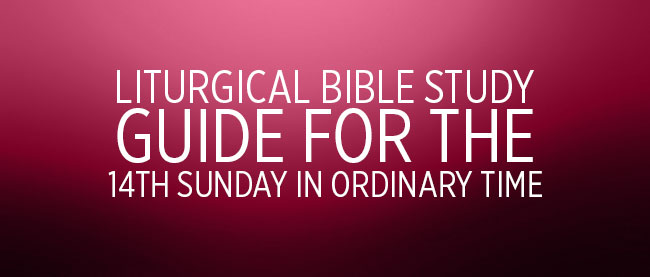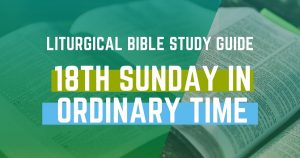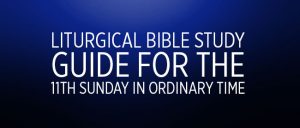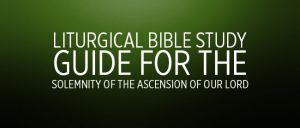Gospel
This account takes place early in Jesus’ public ministry in Galilee. He is now in Nazareth, his home town. What we hear today is the story of Jesus’ rejection by His own people. Parallel gospel accounts are Matthew 13:53-58; John 4:44; 6:42; 7:13, 15.
First Reading
The Book of Ezekiel is one of four books of the major prophets (Isaiah, Jeremiah, Ezekiel and Daniel); the three greatest being Isaiah, Ezekiel and Daniel. These three are now placed in chronological order in our Bibles, but the Talmud speaks of an earlier order in which Jeremiah was first and Isaiah was last: “Jeremiah is all doom; Ezekiel begins with doom but ends with consolation; while Isaiah is all consolation.” This early arrangement was built on moving from doom to hope with Ezekiel in the middle as the hinge (or dividing line) between the two. The book of Ezekiel itself divides into two equal parts: Chapters 1 through 24 are oracles of judgment against Israel; and chapters 25 through 28 propose a variety of words of support and hope.
Ezekiel (the name means “may God strengthen”) claims to have started his ministry in 593 B.C. and his last dated prophecy is in 571 B.C. What was going on during this time? In 598 B.C. the Babylonian army sacked Jerusalem and took King Jehochin prisoner. Nebuchadnezzar, King of Babylon, appointed Zedekiah (Jehochin’s uncle) as king-regent. King Jehochin, the wealthy, and the craftsmen (along with Ezekiel) were deported to Babylon. Zedekiah planned a rebellion, this act broke his covenant with Nebuchadnezzar. This time, the Babylonian siege lasted from 589 to 586 B.C. and wiped out all of Judah’s cities before taking Jerusalem itself (2 Kings 25; Jeremiah 37-45, 52). The bulk of Ezekiel’s ministry took place between 593 and 586 B.C., during the reign
of King Zedekiah and the period of devastation that followed the fall of Jerusalem. Our reading for today takes place early in Ezekiel’s ministry (about 593 B.C.).
Second Reading
This is the fourth letter which Saint Paul has written to the Corinthians. The first is mentioned in 1 Corinthians 5:9 but has been lost. The second is what we call 1 Corinthians and was written in the spring of A.D. 57. The third letter is mentioned in 2 Corinthians 2:4 and is also lost. What we know as 2 Corinthians is the fourth letter and is thought to have been written in the autumn of 57.
This week we are looking at the part of his letter (chapters 10 through 13) where Saint Paul addresses the lies being spread by his enemies (the Judaizers). Because those who have denied his authority are still living in Corinth, he deals item-by-item with the lies and gives the faithful more than enough arguments to answer his detractors. This rebuttal also acts as a preparation for his next, his third, visit to Corinth in early 58.





